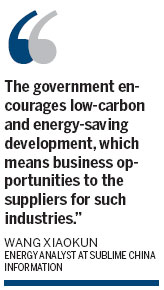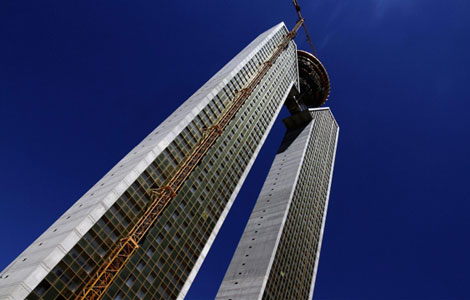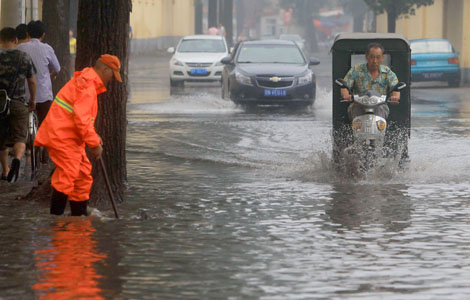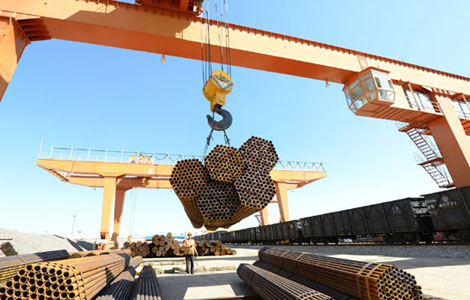New green policy gives industries a big boost
Updated: 2013-08-12 07:15
By Du Juan (China Daily)
|
||||||||
Value of energy-saving sector's output to reach $728b by 2015
China will speed up development of the energy-saving sector and make it a pillar of the national economy by 2015, top policymakers said on Sunday.
The State Council vowed in a statement to spur technological innovation, expand demand for energy-saving products and boost the environmental-protection service industry.
 |
According to the State Council, the value of the energy-saving industry's output will reach 4.5 trillion yuan ($728 billion) by 2015, an average annual growth of 15 percent.
Wang Xiaokun, an energy analyst at Sublime China Information, a Chinese commodities consulting firm, said the policy gives clear direction to the industry and brings opportunities to investors, including private companies.
The government will play a leading role and allow non-State capital to invest in energy-saving projects.
"The government encourages low-carbon and energy-saving development, which means business opportunities to the suppliers for such industries," said Wang. "For instance, the equipment manufacturers for power plants and grid will benefit from the policy."
Ren Junming, a commentator on Xinhuanet.com, said the policy is significant in terms of expanding domestic demand and promoting upgrading of traditional industries.
China will invest 1.8 trillion yuan in the renewable energy industry during the 12th Five-Year Plan (2011-15) and spend another 2.3 trillion yuan on energy-saving and emissions reduction, Xie Zhenhua, deputy director of the National Development and Reform Commission, said in late July.
China has committed to reduce its carbon emissions per unit of GDP by 40 to 45 percent by 2020 from the 2005 level and raise its non-fossil energy consumption percentage to 15 percent of its energy mix.
From 2006 to 2012, China's energy consumption per unit of GDP was reduced by 23.6 percent, equivalent to a reduction of 1.8 billion metric tons of carbon emissions. Market share of high-efficiency energy-saving technology and equipment will rise from the current 5 percent to 30 percent by the end of 2015, Xie said.
"Facing the promising green and low-carbon markets, related companies should increase their investments in research, development and the application of low-carbon technology to strengthen their competitiveness in the global market," said Xie.
"By coping with climate change and adapting to the new trend, companies can make profits and fulfill social responsibility at the same time."
The market share of energy-efficient products will increase at least 50 percent by 2015, the State Council said.
Urban sewage treatment capacity will also increase to 200 million cubic meters per day by 2015.

 Spanish skyscraper forgets elevator
Spanish skyscraper forgets elevator
 Beijing rainstorm cancels flights, kills airport worker
Beijing rainstorm cancels flights, kills airport worker
 highs and lows of marine rescue
highs and lows of marine rescue
 Lin Dan wins Olympic final rematch over injured Lee
Lin Dan wins Olympic final rematch over injured Lee
 Northeast China braces for major floods
Northeast China braces for major floods
 High-heeled, well heeled
High-heeled, well heeled
 Thunder storm hits Beijing, darkening the sky
Thunder storm hits Beijing, darkening the sky
 Fans stay away as worlds get off to sweaty start
Fans stay away as worlds get off to sweaty start
Most Viewed
Editor's Picks

|

|

|

|

|

|
Today's Top News
New green policy gives industries a big boost
Northeast China braces for major floods
Launches highlight India's ambitions
Chinese put on alert in Afghanistan
Questioning China's achievements
Go-between helped to cement deal
The only way now is up
Japan to carry out self-defense
US Weekly

|

|




